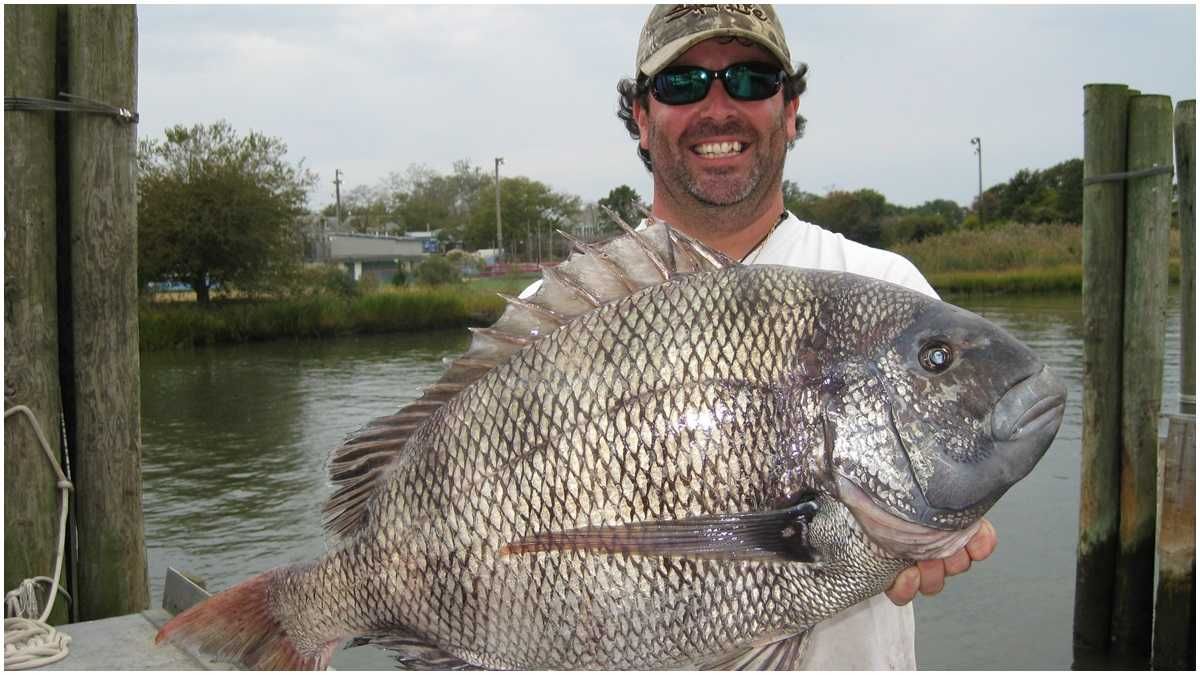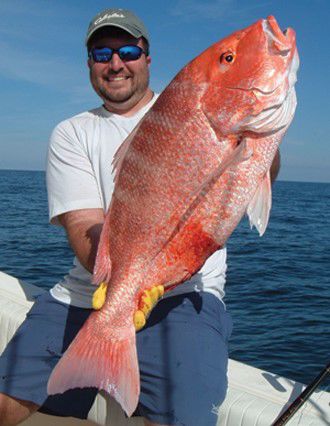
TPSO smashes brick-wall drug burglary ring
December 30, 2015
5 in custody were planning additional crimes
December 30, 2015Driven by stiff winds, high tides pushed water over the marsh grasses near Golden Meadow for several days, but a reversal of wind direction changed the flow. Now, rapidly falling tides pulled baitfish, shrimp and other creatures from their protective cover into open water.
Unable to fight against the current, small crabs drifted along with the tides toward the Gulf of Mexico. Up to this point, we vertically dropped shrimp-laden hooks or live cocahoe minnows next to barnacle-encrusted dock pilings in about eight to 10 feet of water.
Notorious nibblers lurking beneath the dock deftly stole our shrimp and bit minnows in half just behind the gills without ever touching our hooks. I put a crab chunk on a 1/8-ounce long-shanked jighead and handed the rod to an angler who had never fished in saltwater before that day.
“Don’t cast it, but flip it a few feet upstream and let it drop next to the dock piling,” I instructed. “The tide will push it back under the dock. When you feel the bottom, pull it up about a foot or two. Keep the crab slightly off the bottom and as close to the pilings as possible. When a fish hits, you won’t feel much of a bite, only a subtle nibble. Let the fish take it a moment and then set the hook.”
“I’ve got a nibble, but it feels like a bream or something,” the angler said. “It must be a tiny one. He’s not really biting, but I can feel the weight on the line. Maybe I’m just hung up on something.”
“Set the hook – hard,” I urged. “He might be bigger than you think.”
The angler set the hook. Immediately, the rod doubled over as the powerful fish headed straight for the barnacles on the pilings to pop the line. No finesse, just raw power, it dared the angler to pull it to the surface. The angler eventually pulled in what looked like a 6-pound bream on steroids.
Many sportsmen distain sheepshead because thick spines and tough scales make them difficult to clean. However, they taste delicious. Although many anglers rank sheepshead low for food value, nobody disputes their fighting abilities. Built for power, not speed, they don’t run like rampaging redfish. They don’t slash and flash like speckled trout. Instead, they rely upon brute strength, hunkering down by a piling or reef and refusing to budge.
“When we’re fishing for sheepshead, we rerig a lot because they are notorious for hanging around the roughest structure,” said Sonny Schindler of Shore Thing Fishing Charters (228-342-2206,www.shorethingcharters.com) who often fishes the marshes around Lake Borgne. “When we fish for sheepshead, we bring extra everything. Anyone fishing in a good sheepshead spot will lose some tackle. I use 20-pound braid tipped with a Mustad number 2 live bait hook.”
Sheepshead occur abundantly throughout coastal Louisiana and in the Gulf of Mexico, but anglers can often catch them without stepping into a boat. Sheepshead thrive under bridges or docks where they crunch barnacles or snatch shrimp and crabs off the pilings. They also hang around seawalls, marinas and other places with abundant barnacles. In fact, Wayne J. Desselle landed the world record sheepshead while fishing the old concrete seawall on Lake Pontchartrain in the city limits of New Orleans. His fish weighed 21.25 pounds.
When fishing docks or bridge pilings, anglers can often just vertically dangle baits next to barnacle-encrusted structures. Drop baits to the bottom and slowly bring them toward the surface to find the right depth. At each depth, jig baits up and down very slowly. Sheepshead might lurk on bottom, near the top or suspend in the water column. To really put sheepshead into a frenzy, scrape barnacles off crusty pilings with a shovel or hoe. This produces a cloud of barnacle juice and tiny meat pieces. Free line a live shrimp, fiddler crab or other morsel into the debris cloud.
“Scraping barnacles off the pilings really works,” recommended Kenny Kreeger with Lake Pontchartrain Charters (985-643-2944, www.lakepontchartraincharters.com) in Slidell. “Sheepshead love to eat barnacles. With all that barnacle meat and juices floating in the water, any sheepshead in that area will come running to look for something to eat.”
For the best sheepshead action, find docks where anglers clean fish. While cleaning their fish, anglers toss heads, entrails, backbones and other scraps into the water. Sheepshead gather in huge numbers to feed upon the shrimp and crabs attracted to the scraps. In addition, many camp owners toss food scraps or old bait into the water, attracting more crabs, shrimp and baitfish.
Sheepshead occasionally bite spoons, spinners, soft plastic grubs or even flies, especially ones that resemble small crabs, but they prefer natural food. Although they prefer crustaceans to finfish, sheepshead hit a variety of live or natural baits including shrimp, minnows, clams, squid, fiddlers, cut bait and other morsels. Above all, they relish crabs. Frequently, they nibble away at crabs, tearing them apart piece by piece. However, they might slurp small whole crabs.
“Every now and then, we’ll catch a sheepshead on an artificial bait, but mostly they like live bait,” Kreeger advised. “When I’m fishing for sheepshead, I use a Carolina rig with a 1/2- to 3/4-ounce weight and an 18-inch 30-pound leader. I tip it with a live shrimp and fish around hard structure, like bridges, dock pilings, jetties, rock piles, sunken boats or oyster reefs. I put the bait as close to the structure as I can.”
Despite their powerful jaws and impressive dental equipment, sheepshead gingerly nibble baits and don’t rush to attack food. More curious than aggressive and accustomed to plucking sedentary barnacles off pilings, they don’t chase down prey. Almost timidly, they may examine morsels before tasting them. A sheepshead can quickly strip bait from a hook. However, they generally don’t spook easily and may remain in the same place as long as they can find food.
Often, anglers don’t even detect subtle strikes, perhaps just a slight tug. Sometimes, the line simply feels heavy or mushy. Anglers may think they snagged an old crab trap or perhaps even the pilings. However, when these powerful, pugnacious porgies begin to move, all doubt vanishes.
In late winter, anglers often catch the biggest sheepshead of the year. Before spawning, sheepshead reach their maximum weight. Spawning typically occurs from February through April. As water warms, sheepshead return to inshore waters from deeper waters offshore where they congregate in huge numbers around wrecks, shell reefs, oilfield platforms and other hard structures.
“Winter is a good time to catch big sheepshead,” Schindler said. “The colder the weather, the better the sheepshead fishing.”
When redfish and trout don’t cooperate, anglers can often find outstanding line-pulling action from some of the most powerful fish, pound for pound, on the Gulf Coast. Since so few people intentionally target sheepshead, these abundant fish offer excellent sport on light tackle with little competition. •
Captain Roger Long shows off his massive sheepshead he caught in Louisiana marshes. The fish are easy to catch in winter throughout the state.
Young angler Tom Reeves is pleased with his sheepshead, which was snagged this past summer. Golden Meadow is a haven for sheepshead each winter.









